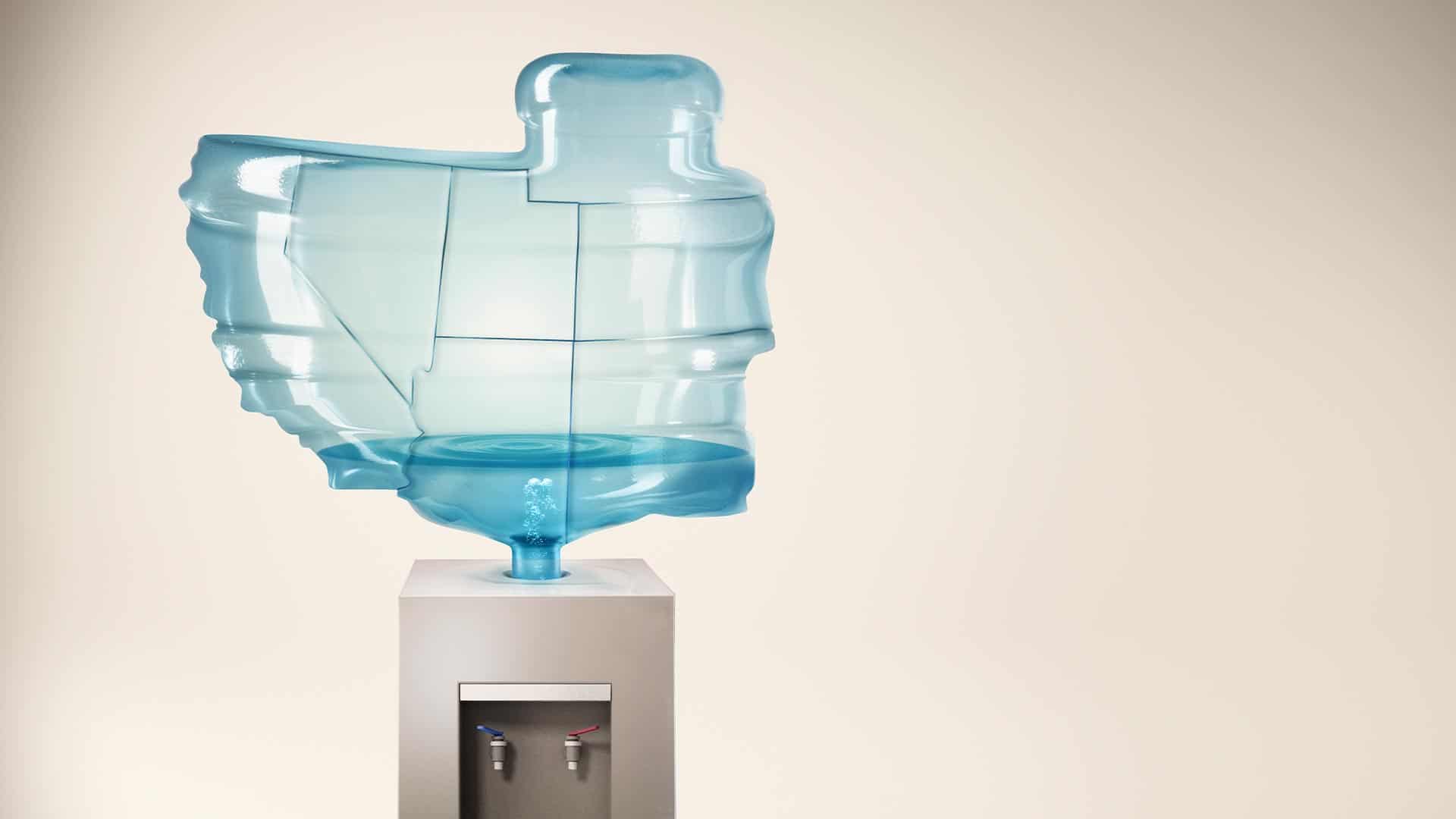

Photo illustration by C. J. Burton
Nearly half a million homes in the Centennial State could be without water by 2050. Colorado River reservoir levels are in a free fall. And local farmers already don’t have the supplies they need. What happens next depends on what we do today.
In January, the same series of storms that left Denver’s streets covered in deep drifts also pushed Colorado’s snowpack north of 120 percent of its average for that point in the year. If your gauge was the number of ski runs open, it was great news. If your gauge was the state’s water supply, it was likely barely enough to maintain the status quo.
Study after study has shown that as the climate warms, more and more Centennial State snowmelt is lost through evaporation and other processes before it can find its way into our rivers, streams, and reservoirs. So we’ll need bigger than average snowpacks each winter just to keep reservoir levels and river flows from falling further—and unless everyone gets serious about tackling the climate crisis, that’s simply not going to happen. One recent study from researchers at New Mexico’s Los Alamos National Laboratory found that Colorado could see a 50 to 60 percent reduction in snow within 60 years. When those same researchers used pattern recognition programs to group subregions of the Colorado River Basin by how each sector will respond to climate change, they found something disturbing: By 2080, much of western Colorado could experience aridity similar to Arizona’s.
What’s even more alarming is that, in many ways, the future is already here. This past June, the Bureau of Reclamation, which manages the Colorado River through a network of reservoirs, announced that the seven states in the Colorado River Basin had 60 days to devise a plan to reduce the amount of river water they use annually by two to four million acre feet, as much as a third of the waterway’s annual flow. The proposed reduction is meant to save Lake Mead and Lake Powell from dead pool, the point at which the reservoirs become so low that water can no longer flow through their dams, drastically reducing water supplies for millions in the Southwest. After the states failed to meet that deadline, another was set for January 31. Six states managed to agree on a proposal that fell half a million acre feet short of the minimum. Add in California’s refusal to sign, and it’s likely the federal government will have to take unilateral action. This discord only adds to the sense among experts that we’ve entered a new era for water in much of the West.
Meanwhile, water levels are still dropping and the ripple effects of whatever compromise is reached—or isn’t reached—will be felt far beyond that river basin, including in Denver, which gets much of its water from the Western Slope. There is some cause for hope, however. From new cash crops that aren’t nearly as thirsty to science-fiction-worthy technology for forecasting droughts, there are ways to decrease demand and stretch supply. “You need to have as many tools in your toolbox as possible,” says Greg Fisher, demand planning and efficiency manager at Denver Water. “This is Colorado. Even if you could take the drought and the Colorado River [crisis] out of the equation, we’re still a water-constrained state with a growing population. People need to appreciate what water is for. It’s for life, safety, and health. I think anything beyond that is […]
Full article: The Search for Solutions to Colorado’s Water Crisis
Clean water is essential for life, yet millions of Americans unknowingly consume contaminants through their…
Human brains contain higher concentrations of microplastics than other organs, according to a new study, and the…
From the Office of the Governor: In anticipation of a multi-day, significant atmospheric river in Northern California,…
From Governor Newsom: Scientists, water managers, state leaders, and experts throughout the state are calling…
Photo: A harmful algal bloom in Milford Lake, Kansas, made the water appear bright green.…
An expanded plastic foam coffee cup is at a donut shop in Monterey Park, California.…